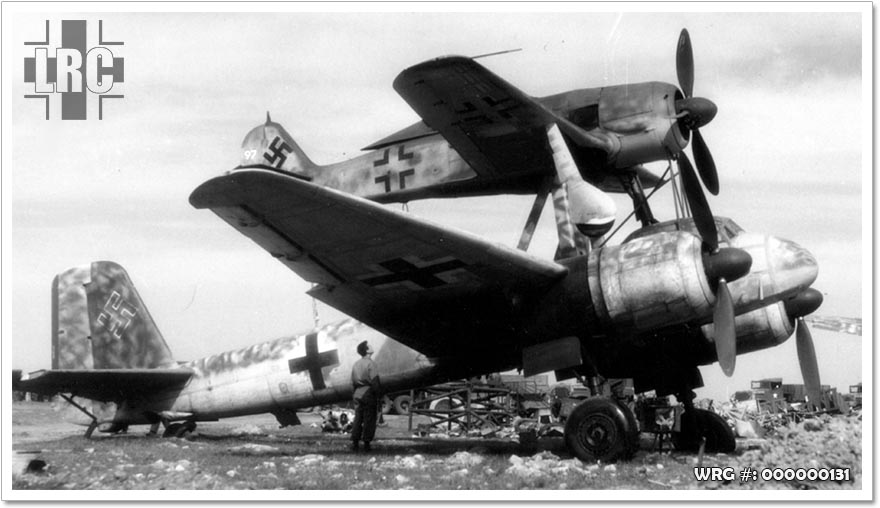Focke Wulf Fw 190
Operational History: Silesia to Berlin
In January 1945 the Soviets began a series of offensives in its drive to Berlin. The Lower Silesian Offensive and Upper Silesian Offensives and the vital Vistula-Oder Offensive was designed to bring the Red Army to the eastern border of Germany. The Soviets began their offensive early, to take the pressure off the Western Allies in the Ardennes. For the Fw 190s units, the initial stages were to prove tactically successful. The Soviets were forced to start offensive action under severe weather conditions. Airfields were reduced to mud-baths owing to heavy rains, and open country became impassable owing after use by large numbers of vehicles. The Red Air Force suffered more losses to accidents than combat. The Soviet armour was forced to use the few hard-surface roads to continue their advance. These routes were easily detected by German Schlachtgeschwader. The Germans, by contrast, had hard surface runways in German territory and large hangars for aircraft. On 26 January 800 vehicles, 14 tanks and 40 artillery pieces were claimed among the crammed highways. After two weeks, the offensive slowed. Fw 190 units in particular exacted a heavy toll of Soviet infantry; attacking in waves of seven to nine, unchallenged. Overall, the Germans claimed 2,000 vehicles and 51 tanks in the first three days of February. However, this came at a cost of 107 aircraft in nearly 3,000 attacks. The largest concentration of German air forces since 1940 was amassed against the Soviets, which saw the Germans gain air supremacy briefly, contributing to saving Berlin from capture sooner. The rapid construction of concrete runways allowed the Soviets to win back "aerial superiority". On 14 or 16 February 1945 Otto Kittel became the most successful Luftwaffe ace to be killed in action; Kittel had achieved 267 victories on the Eastern Front, all but 39 in the Fw 190. By March and April the situation had become desperate for German forces. The Soviets had reached the Oder and were encroaching upon Berlin. Fw 190s were now used in unusual ways to destroy the Soviet bridgeheads across the Oder. Focke-Wulfs were attached the upper fuselage of a Junkers Ju 88 "host" by struts which also contained control cables to allow the Fw 190 pilot to fly the combination using his flight controls. The operational versions of the Mistel replaced the cockpit section of the Ju 88 with a shaped, hollow charge warhead weighing, in total, 3,500 kg – the weight of the explosives was 1,700 kg. The Fw 190 pilot would approach to within a few kilometers of the target, aim the Ju 88 at the bridges, then release his Fw 190 and escape while the Ju 88 flew into the target. These weapons, which, in some versions, used a Bf 109F-4 instead of an Fw 190, were used against the vital Küstrin bridgeheads. Küstrin was due east of Berlin, and if it could be held, a Soviet advance on Berlin could be prevented.
Fw 190/Ju 88 Mistel
Sources:
Gunston, Bill - The Encyclodepia of the Worlds Combat aircraft, 1976, Chartwell Books, Inc., New York
Brown, Eric, Captain - Wings of the Luftwaffe , 1979, Airlife Publishing Ltd., Shrewsbury
, 1979, Airlife Publishing Ltd., Shrewsbury
Gunston, Bill & Wood, Tony - Hitler's Luftwaffe , 1977, Salamander
Books Ltd., London
, 1977, Salamander
Books Ltd., London
Donald, David - The Complete Encyclopedia Of World Aircraft, 1997, Brown Packaging Books Ltd., London
Wikipedia - Fw 190
Gunston, Bill - The Encyclodepia of the Worlds Combat aircraft, 1976, Chartwell Books, Inc., New York
Brown, Eric, Captain - Wings of the Luftwaffe
Gunston, Bill & Wood, Tony - Hitler's Luftwaffe
Donald, David - The Complete Encyclopedia Of World Aircraft, 1997, Brown Packaging Books Ltd., London
Wikipedia - Fw 190






